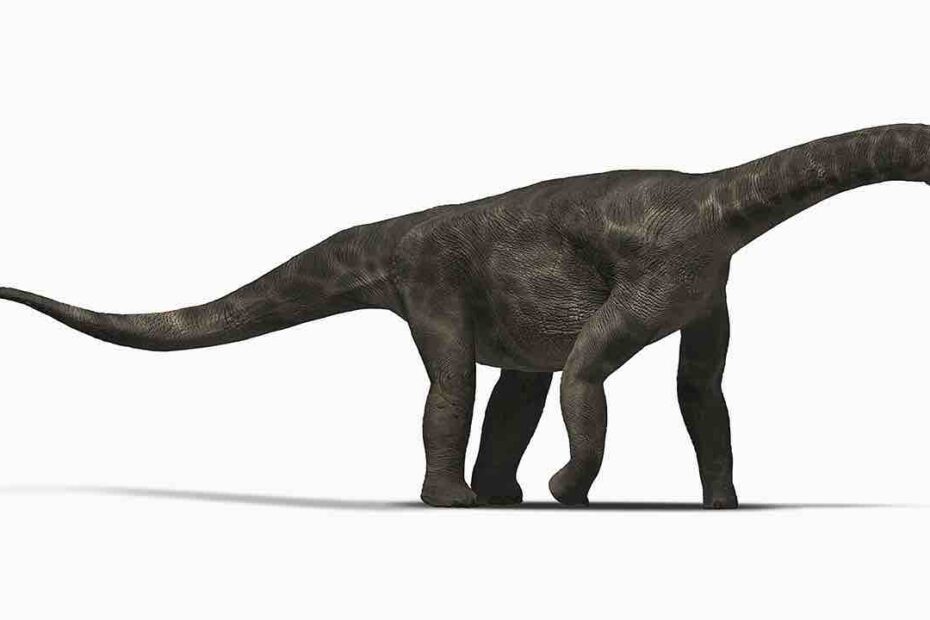Dinosaurs, with their colossal sizes and mysterious lives, continue to fascinate us. Among these prehistoric giants, sauropods stand out as some of the largest terrestrial creatures ever to roam the Earth. In this article, we delve into the captivating world of large sauropods, uncovering lesser-known facts that add depth to our understanding of these magnificent giants.
1. Size Beyond Imagination
Sauropods are renowned for their immense size, with some individuals reaching lengths of up to 100 feet or more. The sheer scale of these giants is difficult to comprehend, and it sets them apart as true titans of the dinosaur world.
2. Four-legged Marvels
Unlike some other dinosaur groups, sauropods were quadrupedal, meaning they walked on all four legs. Their sturdy limb structure supported their colossal weight and allowed them to navigate their environments with relative ease.
3. Long Necks for Reach and Grazing
One of the most distinctive features of sauropods is their long necks. These extended necks served a crucial purpose: reaching vegetation high in trees and enabling efficient grazing. Sauropods were the ultimate herbivores, and their necks were their secret weapons for acquiring sustenance.
4. Diverse Diet Preferences
While sauropods were primarily herbivorous, their diet preferences varied. Some specialized in consuming low-lying vegetation, while others reached for the canopy. This dietary diversity allowed sauropods to occupy different niches within ecosystems.
5. Whip-Like Tails for Defense
Sauropods possessed powerful tails that they could wield like whips. While primarily used for defense against predators, these tails could also be effective tools for communication within the herd.
6. Record-Breaking Eggs
Despite their enormous size, sauropods laid relatively small eggs compared to their body mass. These eggs were still sizeable by modern standards and provide insights into the reproductive biology of these giants.
7. Multigenerational Herds
Fossil evidence suggests that sauropods lived in multigenerational herds. These social structures likely played a role in protection against predators and the sharing of knowledge about food sources and migration routes.
8. Longevity Secrets
Sauropods had relatively long lifespans, which contributed to their success as a group. Their ability to survive and thrive through various life stages ensured the continuation of their lineage.
9. Oxygen-Hungry Metabolism
The massive size of sauropods raised questions about their metabolism. Some researchers believe they had a high metabolism and required large amounts of oxygen to support their active lifestyles.
10. Extinction and Legacy
Like all dinosaurs, sauropods eventually faced extinction at the end of the Cretaceous period. While their physical presence vanished, their legacy endures in the form of fossils, which continue to provide invaluable insights into Earth’s ancient past.
As we unveil these unknown facts about large sauropods, we gain a deeper appreciation for the incredible diversity and adaptations of these colossal creatures. Sauropods, with their remarkable features and majestic presence, continue to capture our imaginations and remind us of the awe-inspiring nature of the prehistoric world.
FAQs About Large Sauropods
1. Q: How big were large sauropods, and how did they compare to modern animals?
- A: Large sauropods were colossal, with some individuals reaching lengths of over 100 feet. To put it in perspective, they were longer than most modern land animals, including elephants and giraffes.
2. Q: Why did sauropods walk on all four legs, and how did they support their immense weight?
- A: Sauropods adopted a quadrupedal stance to distribute their weight more effectively. Their sturdy limb structure, including powerful legs and feet, allowed them to support their massive bodies.
3. Q: What was the purpose of sauropods’ incredibly long necks, and how did they use them to their advantage?
- A: Sauropods had long necks primarily to reach vegetation high in trees and graze efficiently. Their necks were like natural cranes, enabling them to access food sources that other herbivores couldn’t.
4. Q: Did all sauropods have the same diet, or did it vary among species?
- A: Diet preferences among sauropods varied. Some specialized in low-lying vegetation, while others reached for canopy plants. This dietary diversity allowed them to occupy different ecological niches.
5. Q: What was the purpose of sauropods’ whip-like tails, and how did they use them for defense?
- A: Sauropods used their powerful tails primarily for defense against predators. The whipping motion could deter attackers. Additionally, tails may have had communication functions within the herd.
6. Q: How large were sauropods’ eggs relative to their body size, and what can we learn from their egg size?
- A: Despite their massive size, sauropods laid relatively small eggs compared to their body mass. The size of these eggs provides insights into their reproductive biology and nesting behaviors.
7. Q: Did sauropods live in herds, and what advantages did multigenerational herds offer them?
- A: Fossil evidence suggests that sauropods lived in multigenerational herds. These herds likely provided protection against predators, facilitated knowledge sharing about food sources, and supported social structures.
8. Q: What contributed to sauropods’ relatively long lifespans, and how did this impact their evolutionary success?
- A: Sauropods’ long lifespans were a result of their ability to survive through various life stages. This longevity contributed to their success as a group and ensured the continuation of their lineage.
9. Q: Did sauropods have high metabolisms, and how much oxygen did they require to support their massive bodies?
- A: Some researchers suggest sauropods had high metabolisms and required substantial oxygen to support their active lifestyles. However, the exact metabolic rates remain a topic of scientific investigation.
10. Q: What caused the extinction of sauropods, and how do we continue to learn from their fossils?
- A: Sauropods, like all dinosaurs, faced extinction at the end of the Cretaceous period. While their physical presence vanished, their legacy endures through fossils, which provide invaluable insights into Earth’s ancient past and the history of life on our planet.
Image courtesy: https://www.science.org/content/article/giant-sauropod-dinosaurs-may-have-sported-turtlelike-beaks
